
How to Use VL53L0X: Examples, Pinouts, and Specs
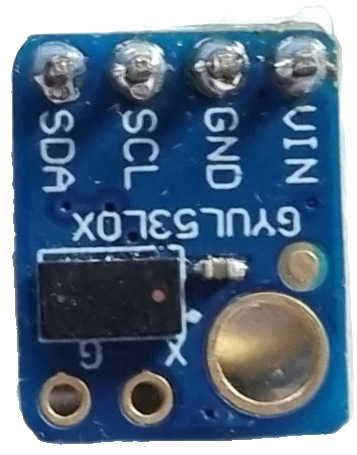
 Design with VL53L0X in Cirkit Designer
Design with VL53L0X in Cirkit DesignerIntroduction
The VL53L0X is a state-of-the-art Time-of-Flight (ToF) laser-ranging sensor that provides accurate distance measurements up to 2 meters. It operates by emitting a very short infrared laser pulse and then measuring the time it takes for the light to bounce back from a target. This technology allows for precise and reliable distance sensing, making it ideal for a wide range of applications such as obstacle detection in robotics, user detection for personal computers and IoT devices, and autofocus in digital cameras.
Explore Projects Built with VL53L0X
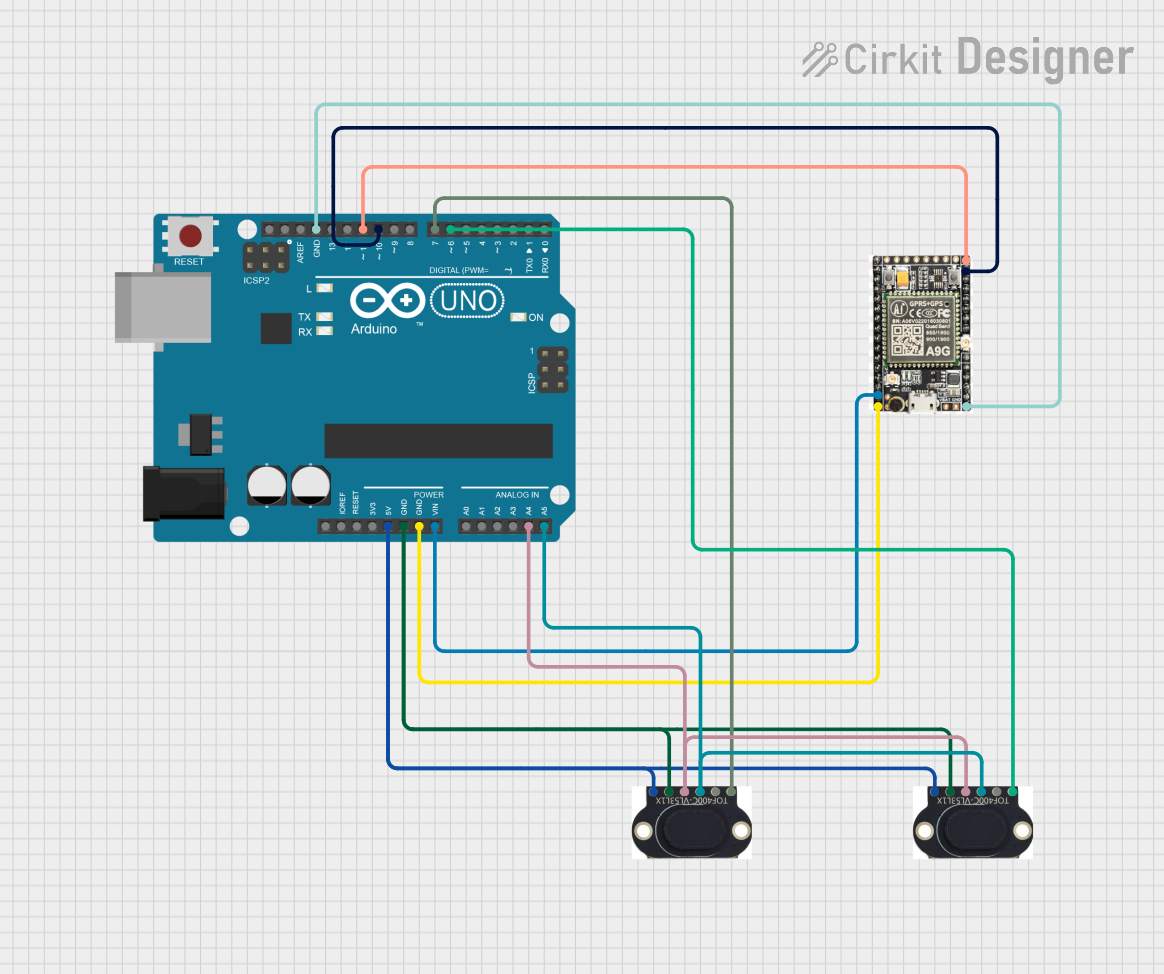
 Open Project in Cirkit Designer
Open Project in Cirkit Designer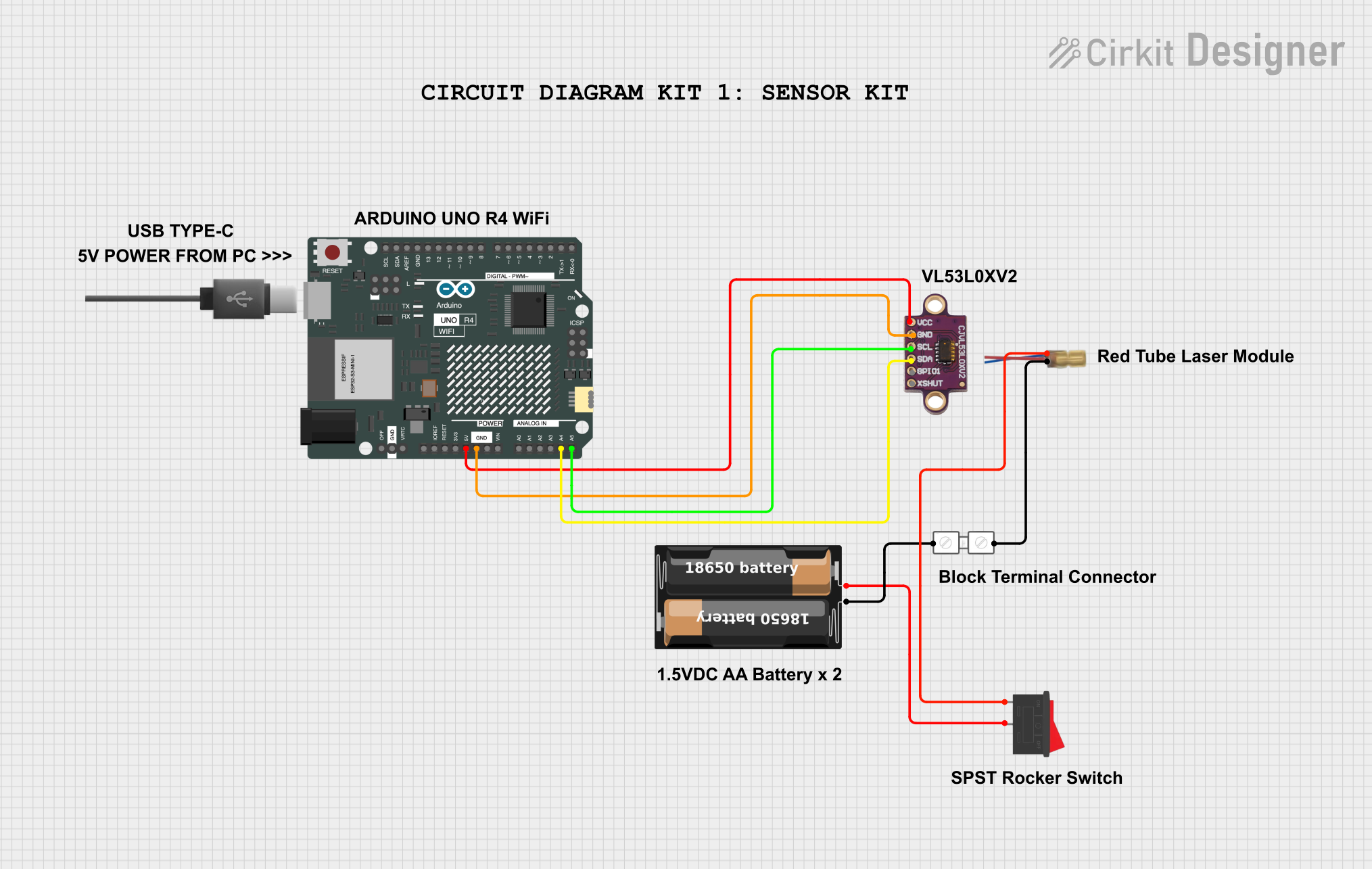
 Open Project in Cirkit Designer
Open Project in Cirkit Designer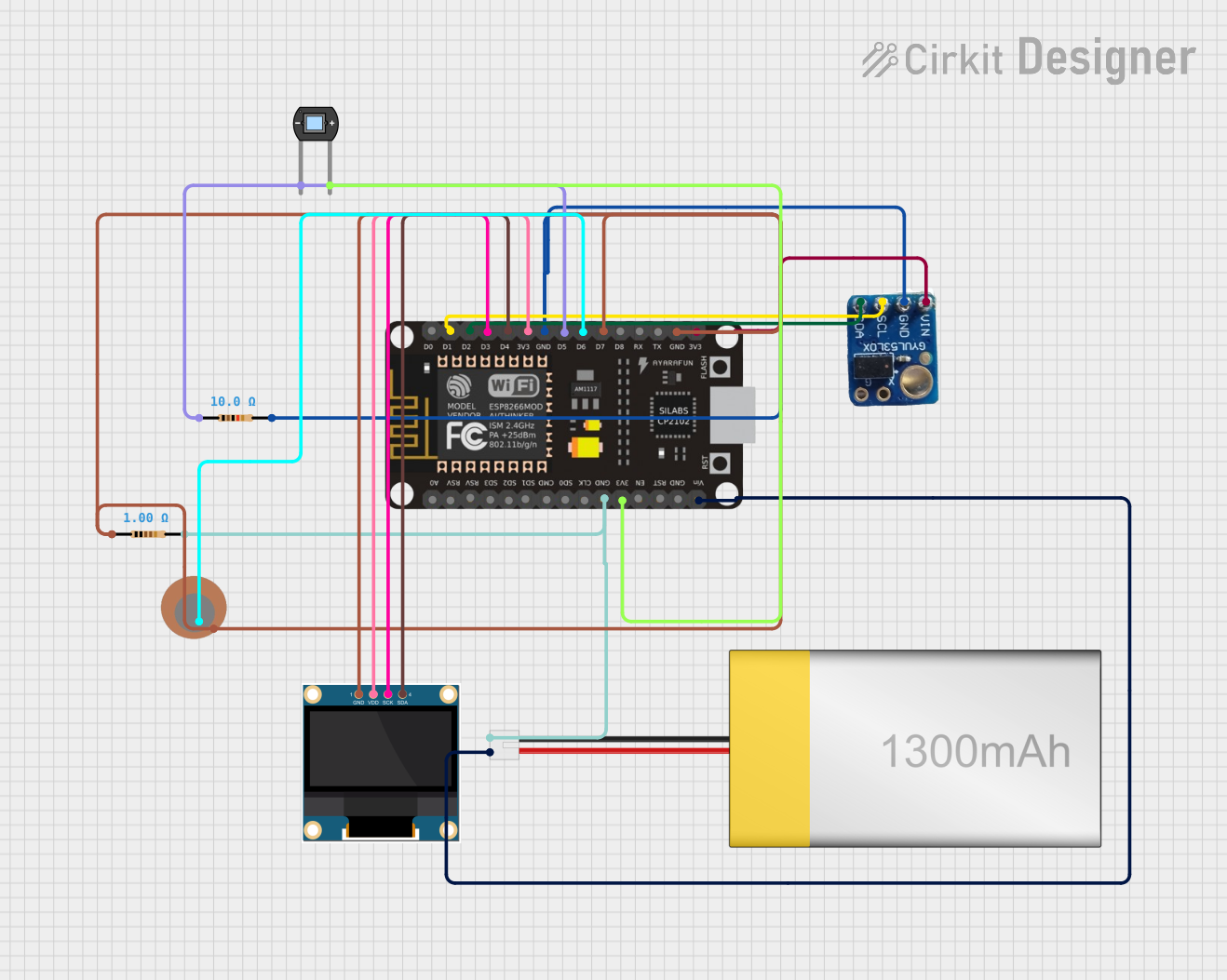
 Open Project in Cirkit Designer
Open Project in Cirkit Designer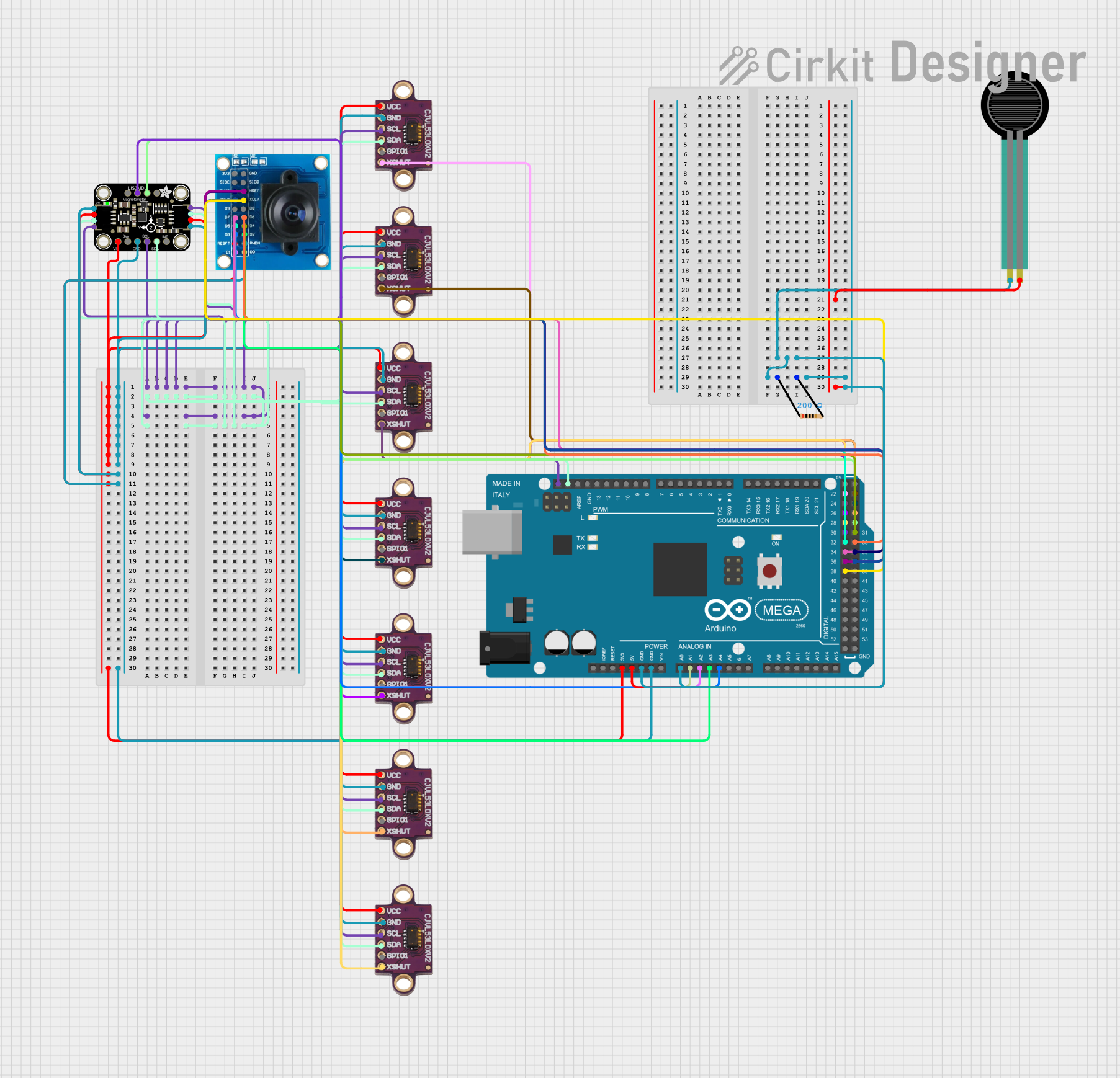
 Open Project in Cirkit Designer
Open Project in Cirkit DesignerExplore Projects Built with VL53L0X

 Open Project in Cirkit Designer
Open Project in Cirkit Designer
 Open Project in Cirkit Designer
Open Project in Cirkit Designer
 Open Project in Cirkit Designer
Open Project in Cirkit Designer
 Open Project in Cirkit Designer
Open Project in Cirkit DesignerTechnical Specifications
Key Technical Details
- Operating Voltage: 2.6V to 3.5V
- Average Current Consumption: 20 mA (typical)
- Peak Current Consumption: 40 mA (during laser pulse)
- Maximum Range: Up to 2 meters
- Resolution: 1 mm
- Laser Wavelength: 940 nm (Invisible to the human eye)
- Field of View: 25°
- Interface: I2C
- I2C Address: 0x29 (7-bit)
Pin Configuration and Descriptions
| Pin Name | Description |
|---|---|
| VIN | Power supply (2.6V to 3.5V) |
| GND | Ground |
| SCL | I2C clock line |
| SDA | I2C data line |
| GPIO1 | Interrupt output (active low) |
| XSHUT | Shutdown pin (active low) |
Usage Instructions
Integration into a Circuit
To use the VL53L0X in a circuit:
- Connect the VIN pin to a 2.6V to 3.5V power supply.
- Connect the GND pin to the ground of the power supply.
- Connect the SCL and SDA pins to the I2C clock and data lines, respectively.
- The GPIO1 pin can be used to receive hardware interrupts.
- The XSHUT pin can be used to power down the sensor for low-power consumption.
Best Practices
- Ensure that the power supply is stable and within the specified voltage range.
- Use pull-up resistors on the I2C lines if they are not already present on the microcontroller board.
- Avoid exposing the sensor to direct sunlight or strong infrared sources to prevent measurement errors.
- Keep the sensor lens clean and unobstructed.
Example Code for Arduino UNO
#include <Wire.h>
#include <VL53L0X.h>
VL53L0X sensor;
void setup() {
Serial.begin(9600);
Wire.begin();
sensor.init();
sensor.setTimeout(500);
sensor.startContinuous();
}
void loop() {
Serial.print("Distance: ");
Serial.print(sensor.readRangeContinuousMillimeters());
if (sensor.timeoutOccurred()) { Serial.print(" TIMEOUT"); }
Serial.println();
}
This example initializes the sensor and starts continuous distance measurements. The measured distance is printed to the serial monitor. If a timeout occurs (no response from the sensor), it prints "TIMEOUT".
Troubleshooting and FAQs
Common Issues
- No Data: Ensure that the I2C connections are correct and that the sensor is powered.
- Inaccurate Readings: Check for obstructions in front of the sensor and clean the lens.
- Intermittent Operation: Verify that the power supply is stable and within the required voltage range.
FAQs
Q: Can the VL53L0X be used outdoors? A: The VL53L0X can be used outdoors but may be less accurate in direct sunlight.
Q: What is the maximum I2C speed the VL53L0X supports? A: The VL53L0X supports I2C speeds up to 400 kHz (Fast Mode).
Q: How can I change the I2C address of the sensor? A: The I2C address can be changed by writing to the I2C_SLAVE_DEVICE_ADDRESS register.
Q: Can the VL53L0X measure distances beyond 2 meters? A: The VL53L0X is optimized for distances up to 2 meters. Measurements beyond this range may be less accurate or unreliable.
For further assistance, consult the manufacturer's datasheet and application notes, which provide in-depth information on the VL53L0X's operation and advanced features.